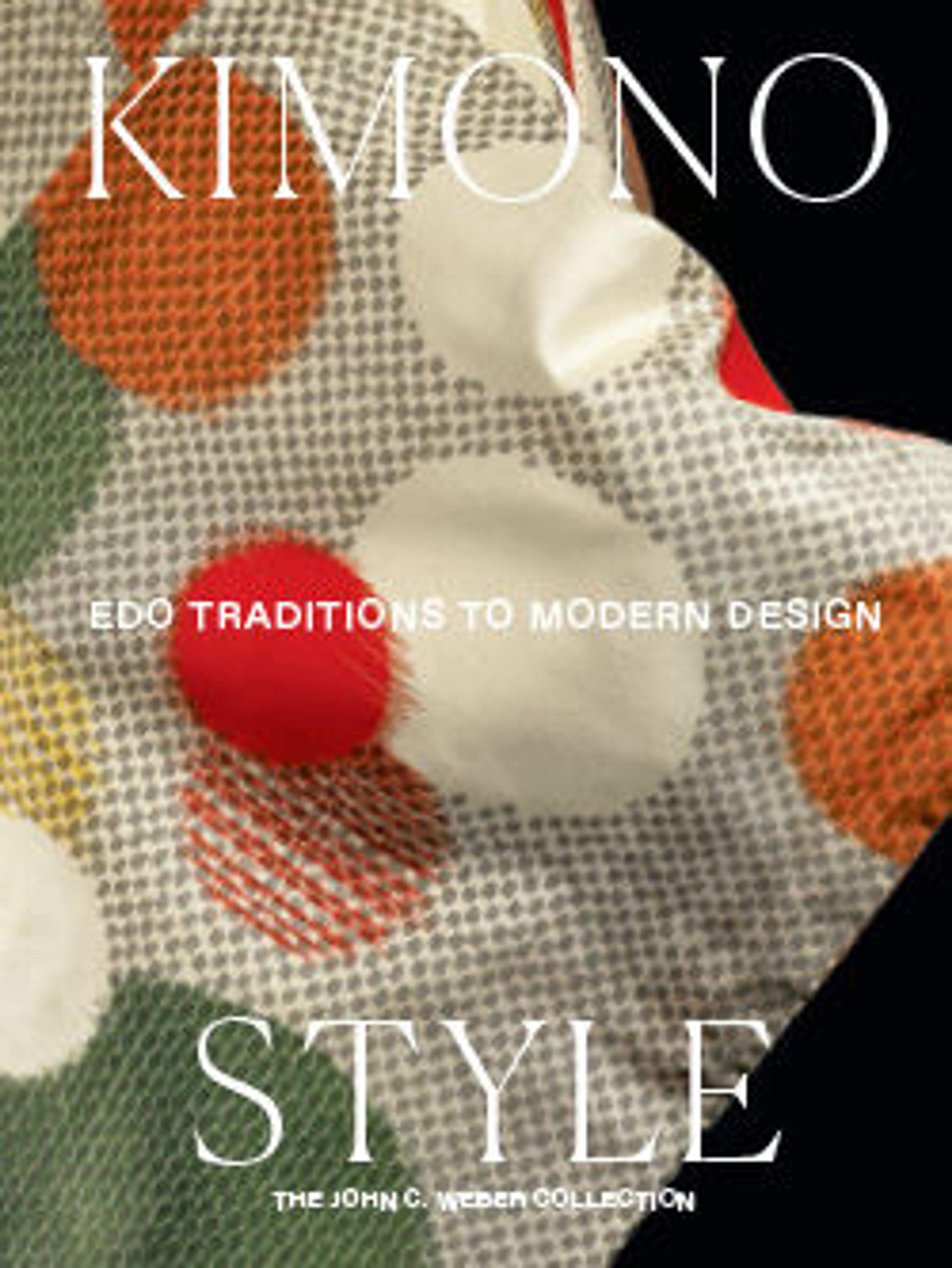Summer Robe (Hito-e) with Cormorant-Fishing Scene
Unlined summer robes made from fine crepe silk were worn as the weather turned warm and humid, beginning in May. Here cormorants swim and fly among reeds and drying fishing nets; a boat with a fisherman’s straw raincoat and hat is also depicted. Meticulous goshodoki, or courtly style decoration, typically combined seasonal elements such as the robe’s scattered wild ginger leaves and cherry blossoms and its water scene with literary motifs recognizable to a well-educated upper-class woman. The fishing boat scene is itself a reference to the Noh play The Cormorant Fisher (Ukai). Crests of wild ginger leaves across the shoulders indicate that the owner was a princess from the Tokugawa shogun family. While the robe’s careful composition and delicate embroidery reflect the expensive tastes of a high-ranking samurai woman, simple stencil-dyed dots stand in for labor-intensive “fawn spot” tie-dye (kanoko shibori), a technique outlawed at the time for signifying personal extravagance.
Artwork Details
- 浅葱絹縮地葵桜水辺に鵜飼い模様単衣
- Title:Summer Robe (Hito-e) with Cormorant-Fishing Scene
- Period:Edo period (1615–1868)
- Date:late 18th–early 19th century
- Culture:Japan
- Medium:Thin crepe silk (chijimi) with paste-resist dyeing, stencil-dyed dots (suri-bitta), hand-painted details, silk embroidery, and couched gold thread
- Dimensions:70 1/8 × 47 1/2 in. (178.1 × 120.7 cm)
- Classification:Costumes
- Credit Line:Gift of John C. Weber, 2019
- Object Number:2019.16.1
- Curatorial Department: Asian Art
More Artwork
Research Resources
The Met provides unparalleled resources for research and welcomes an international community of students and scholars. The Met's Open Access API is where creators and researchers can connect to the The Met collection. Open Access data and public domain images are available for unrestricted commercial and noncommercial use without permission or fee.
To request images under copyright and other restrictions, please use this Image Request form.
Feedback
We continue to research and examine historical and cultural context for objects in The Met collection. If you have comments or questions about this object record, please contact us using the form below. The Museum looks forward to receiving your comments.
